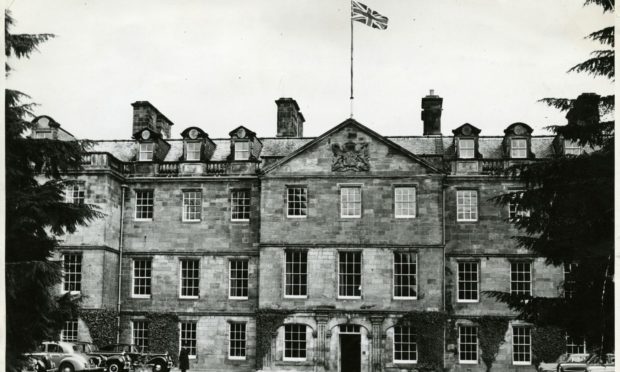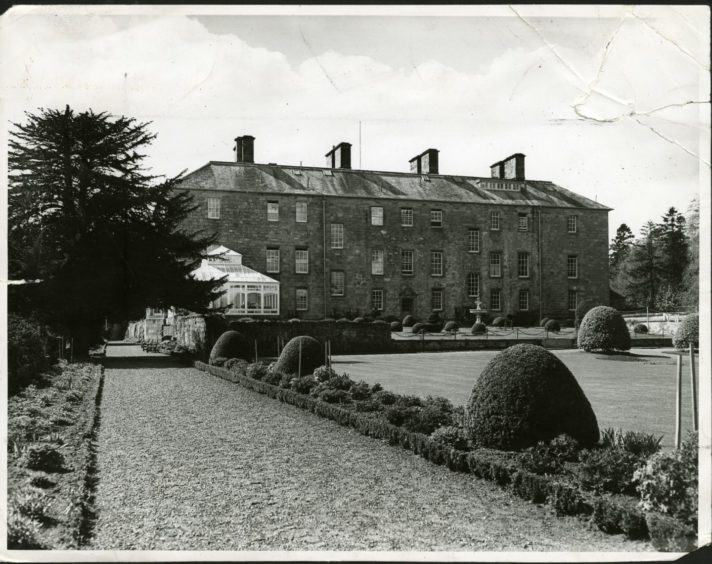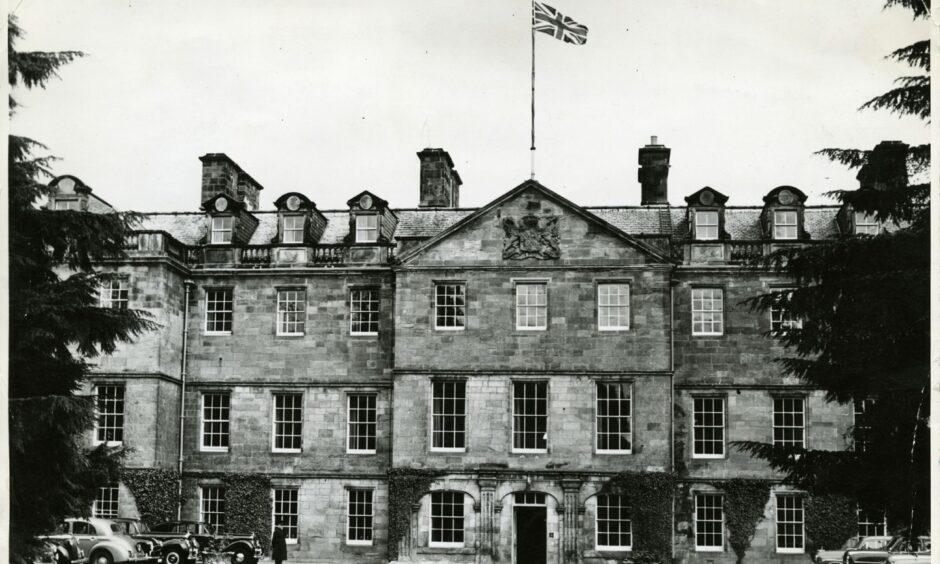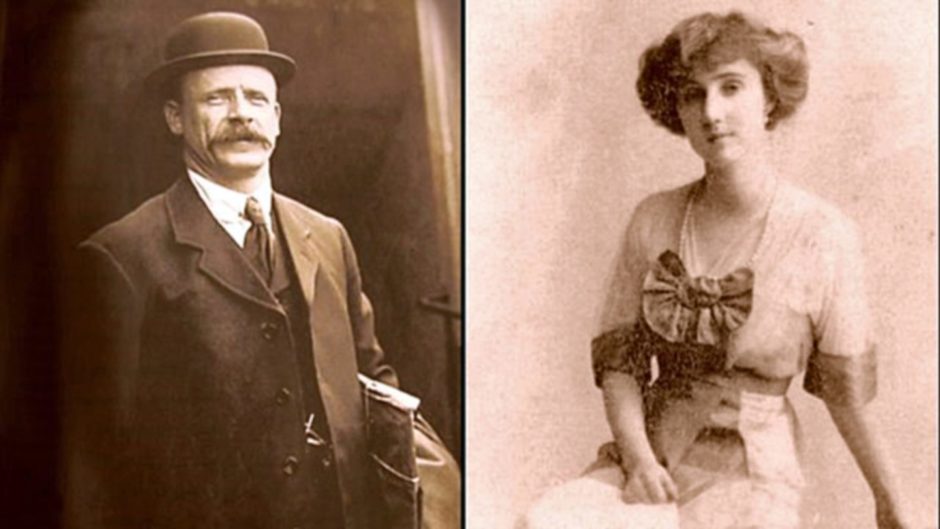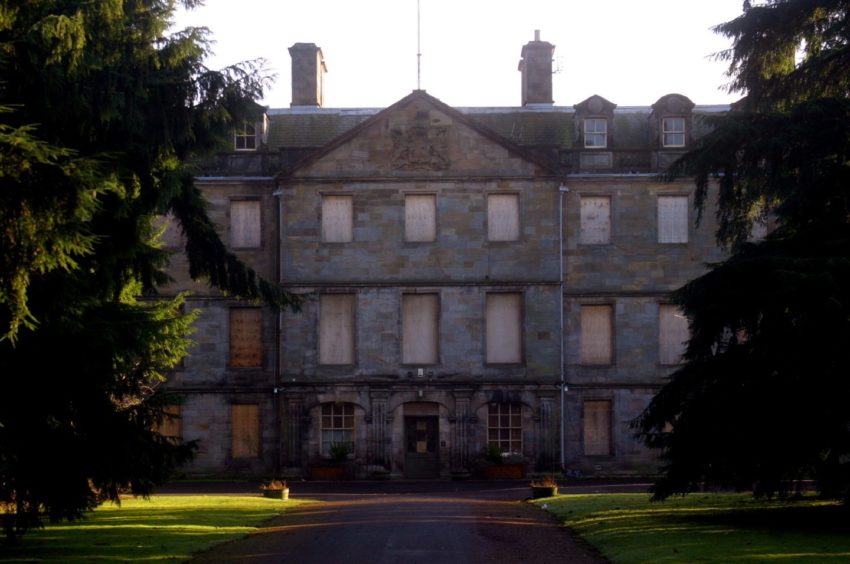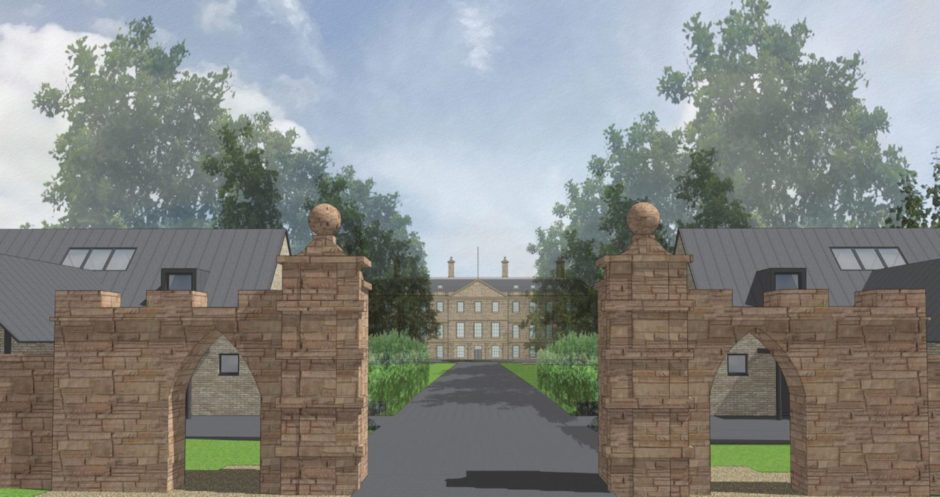In its prime Leslie House was akin to Holyrood Palace and was described by Robinson Crusoe author and frequent guest Daniel Defoe as “the glory of the whole province of Fife”.
However, for the past 12 years it has stood as a burnt-out shell until development work to transform the home and grounds into luxury apartments began last month.
The current ruins do do not resemble the grand palace effect it once was. They are only a small portion of the house that was built by the seventh Earl of Rothes between 1667 and 1672.
John Mylne Junior is credited as being the architect for the mansion, with advice from Sir William Bruce; however. the home was completed by John’s nephew, Robert, after his death in 1667.
The original Leslie House was built around a central courtyard and was at least two storeys tall.
The first floor of the north wing was said to be almost entirely a gallery, lined with full-length portraits.
Following a devastating fire on December 28 1763, the north, south and east wings were all demolished with only the west wing able to be saved to the extent that reconstruction was possible.
By this time the house had been passed down to the 11th Earl of Rothes, John, who inherited the much smaller residence in 1767.
Alterations in the early 20th Century included the addition of a bay window on the south side.
The alterations were once thought to have been carried out by Robert Lorimer, though it is more likely to have been by Gillespie and Scott.
These later alterations coincided with the arrival at the house of Norman, 19th Earl of Rothes, and his wife, Noel.
Titanic heroine Noel
Countess of Rothes Noel and husband, Norman Evelyn Leslie, the 19th Earl of Rothes, inherited Leslie House in 1904 and raised their two sons there.
In April 1912 she left her family in Leslie to travel south with her ladies’ maid, Roberta Maioni, to Southampton.
From there they took a steamship across the Atlantic accompanied by her husband’s cousin, Gladys Cherry.
Noel knew about boating because her husband owned a yacht, a skill that could ultimately be the reason she survived what was to come.
The steamship they sailed on was the RMS Titanic and when it hit an iceberg on the fateful night of April 14 Noel and Gladys were ordered into lifeboat number eight.
There were 35 passengers in their lifeboat and when seaman Thomas Jones, the only seaman on board, saw the determined way Noel helped to calm the terrified passengers, he believed she was “more of a man than any we had on board”.
Noel encouraged the others on board to row and was one of the few who agreed with Jones that they must turn back to pick up more passengers when it was clear the Titanic was sinking.
However, the pair were outnumbered and so the boat continued on for five hours before being rescued by RMS Carpathia.
Noel became a heroine of the Titanic and her courage did not end there.
She returned to the home in Fife and as the First World War raged on, the Countess went on to treat wounded soldiers when she converted a wing of Leslie House into a hospital.
In the aftermath of the war Noel and Norman had no choice but to sell their home and so Leslie House was sold to Sir Robert Spencer Nairn in 1919.
Eat like an Earl
Earlier this year a rare 18th Century diet book shed light on the menu enjoyed by staff and guests alike at Leslie House.
It showed that it was not just the property’s owners and their visitors who enjoyed fine food, as servants dined daily on red meat and white fish, washed down with home-brewed ale.
Experts at the Fife Cultural Trust have been spending time transcribing the pages in the hope that the diet book can provide new insights into long-lost Scots customs and terms.
One dessert on offer during Leslie House’s heyday was tansy cake – a sweet, herbal and slightly toxic pancake traditionally served at Easter in order.
The pages transcribed so far reveal more than just dishes, however. They include records of old weights and measures, and culinary words that have fallen out of favour, such as sea cat (Atlantic wolffish), lapster (lobster) and green goose (young geese).
Andrew Dowsey, archivist at the trust, said the volunteers were looking to see exactly how the Rothes family and their staff dined, and how they sourced their food.
He said: “The family, of course, enjoyed more variety than servants, but we’re keen to find out exactly how it was better.
“Another key focus will be how the diet changed with the seasons. Volunteers have already spotted a proliferation of pigeon in January, which is a familiar Scottish trend.”
Leslie House in modern times
Sir Nairn lived in the home with his family for decades to come, completing a number of improvements during their time there.
However, in 1952 he donated the home to the Church of Scotland, which transformed Leslie House into an eventide home that was opened in June 1956.
Leslie House would become home to a number of older residents throughout the following years, with original architecture and artwork continuing to fill the building’s walls and creating a royal atmosphere for its newest residents.
In 2005, however, the building was sold on to Edinburgh-based Sundial Properties in 2005, which obtained planning permission to restore and convert the property in 2008.
However, these plans soon went up in flames as the fire in 2009 destroyed much of the building, putting the project on hold.
The fire was first noticed by workmen at 7pm on February 5 2009.Since the blaze, which left the house in ruins after the roof was completely destroyed, the property has been left largely exposed to the elements and has also been targeted by vandals.
However, Byzantian Developments won approval for conversion plans in October 2020, and now work has started on the 28 apartments, which will be built within the walls of the Grade A-listed building, and eight new homes in the large garden grounds to the front of the property.
Speaking after plans were approved, Christine Stewart, architect with Davidson Baxter Partnership, which designed the plans, said: “This is one of Scotland’s most important historic buildings.
“Since the fire of 2009, hopes of its restoration appeared to be dashed and its condition worsens each year that passes.
“These latest designs are the result of extensive consultation with key stakeholders, including council planners and Historic Environment Scotland.
“We’re delighted that the members of the planning committee have (unanimously) approved the plans, in effect saving this special building and its grounds for generations to come.”
With these new developments, the history and significance of the Palace of Rothes will continue for decades to come.
